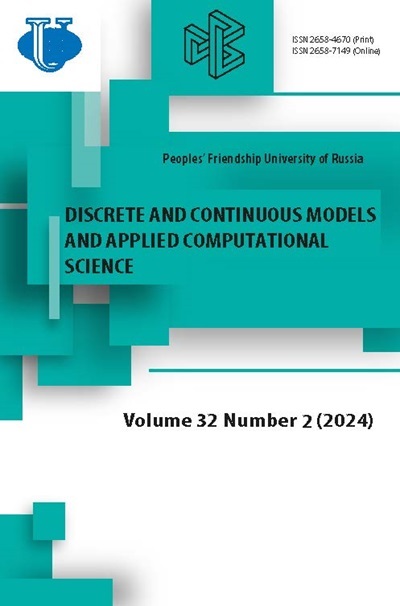Семантика больших данных в корпоративных системах управления
- Авторы: Новикова Г.М.1, Азофейфа Э.Г.1
-
Учреждения:
- Российский университет дружбы народов
- Выпуск: Том 26, № 4 (2018)
- Страницы: 383-392
- Раздел: Информатика и вычислительная техника
- URL: https://journals.rudn.ru/miph/article/view/20227
- DOI: https://doi.org/10.22363/2312-9735-2018-26-4-383-392
Цитировать
Полный текст
Аннотация
Современное развитие техники, телекоммуникационных, информационных и компьютерных технологий позволяет сегодня собирать, обрабатывать и хранить огромные объёмы данных. Одним из первых применений больших данных ( Big Data) стало создание корпоративных хранилищ, использующих собранную информацию для анализа и принятия стратегических решений. Однако бессистемный сбор информации приводит к хранению и обработке большого объёма несущественных данных, в то время как важная информация выпадает из поля зрения аналитиков. Важным моментом является анализ семантики и цели сбора данных, которые определяют как инфраструктуру и технологию сбора, так и направление последующей обработки и использования больших данных с помощью метрик, сокращающих объем данных, оставляя для обработки только необходимую информацию. В статье рассматривается использование онтологии корпоративного менеджмента для определения контекстной семантики больших данных и уменьшения разнообразия данных и итоговой энтропии в системе управления, а также описано применение частично наблюдаемого Марковского процесса принятия решений( POMDP) для формализации функционирования корпоративной системы управления в среде больших данных.
Об авторах
Галина Михайловна Новикова
Российский университет дружбы народов
Автор, ответственный за переписку.
Email: novikova_gm@mail.ru
доцент, кандидат технических наук, доцент кафедры информационных технологий РУДН
ул. Миклухо-Маклая, д. 6, Москва, Россия, 117198Эстебан Гомез Азофейфа
Российский университет дружбы народов
Email: esteban.azofeifa@gmail.com
аспирант кафедры информационных технологий РУДН
ул. Миклухо-Маклая, д. 6, Москва, Россия, 117198Список литературы
- Тарасов В. Б. Управление жизненными циклами продукции и предприятия – ключевой аспект инжиниринга сетевых предприятий // Сборник научных трудов XVII-й научно-практической конференции (ИП&УЗ-2014, Москва. МЭСИ, 24–25 апреля 2014г.) / МЭСИ. — М: Инжиниринг предприятий и управление знаниями, 2014. — С. 245–255.
- Анализ состояния исследований проблем управления жизненным циклом искусственно созданных объектов / Р. М. Юсупов, Б. В. Соколов, А. И. Птушкин и др. // Труды СПИИРАН. 2011. — Т. 16. — 2011. — С. 37–109.
- Montague R. Pragmatics and Intensional Logic // Semantics of Modal and Intensional Logic. — 1981. — Pp. 223–253.
- Елиферов В. Г., Репин В. В. Процессный подход к управлению: моделирование бизнес-процессов. — М.: Манн, Иванов, Фербер, 2013.
- Новикова Г. М. Интеллектуальные технологии в корпоративных системах управления // Двигатель. — 2012. — Т. 4. — С. 58–59.
- Nimmagadda S. L., Reiners T., Wood L. C. On Big Data-Guided Upstream Business Research and its Knowledge Management // Journal of Business Research. — 2018. — Vol. 89. — Pp. 143–158.
- Zheng X., Cai Z. Real-Time Big Data Delivery in Wireless Networks: A Case Study on Video Delivery // IEEE Transactions on Industrial Informatics. — 2017. — Vol. 13, No 4. — Pp. 2048–2057.
- Beer S. Brain of the Firm. ISNM 978-5-397-00156-4. — Librokom, 2009.
- Li Z., Jiang J. Entropy Model of Dissipative Structure on Corporate Social Responsibility // IOP Conference Series: Earth and Environmental Science. — 2017. — Vol. 69, No 1. — P. 012126.
- Wahyudi A., Kuk G., Janssen M. A Process Pattern Model for Tackling and Improving Big Data Quality // Information Systems Frontiers. — 2018. — Vol. 20. — P. 457.
- Novikova G., Azofeifa E. Domain Theory Verification Using Multi-Agent Systems // Procedia Computer Science. — 2017. — Vol. 103. — Pp. 120–125.
- Гладун А. Я., Рогушина Ю. В. Онтологии в корпоративных системах // Корпоративные системы. — 2006. — Т. 1.
- Гаврилова Т. А., Лещева И. А., Лещев Д. В. Использование онтологий в качестве дидактического средства // Искусственный интеллект. — 2000. — Т. 3. — С. 34–39.
- Тарасов В. Б., Калуцкая А. П., Святкина М. Н. Гранулярные, нечеткие и лингвистические онтологии для обеспечения взаимопонимания между когнитивными агентами // Открытые семантические технологии проектирования интеллектуальных систем (OSTIS-2012). — 2012. — С. 267–278.
- Laney D. 3-D Data Management: Controlling Data Volume, Velocity and Variety // Application Delivery Strategies by META Group Inc. — 2001.
- Kitchin R., McArdle G. What Makes Big Data, Big Data? Exploring the Ontological Characteristics of 26 Datasets // Big Data & Society. — 2016. — Vol. 3, No 1. — Pp. 1–10.
- Monahan G. State of the Art—A Survey of Partially Observable Markov Decision Processes: Theory, Models, and Algorithms // Management Science. — 1982. — Vol. 28, No 1. — Pp. 1–16.
















